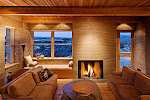At the request of a magazine client who I shoot stills for, I am getting into shooting video for their website. This is another way to diversify my income in these difficult times. Video is something I had always wanted to get into so this is a good inducement. I have directed videos before, working with the skills and equipment of a professional crew before, but done no shooting on my own.
Shooting video, even D&D for basic usage like websites with a 5DII, requires some additional tools. At a minimum I will need a fluid head for panning, and working knowledge of a decent editing program like Final Cut Pro or Adobe Premier. I'm sure as I get into this I will find more weaknesses in my equipment and computer skills. I will periodically give updates as this new endeavor progresses.
If someone thinks that trying to shoot professional video with a 5DII must be a joke..........the final episode of HOUSE (see Gismodo) is being shot with a 5DII!
Anyone out there been down this road, shooting video of architecture?
Subscribe to:
Post Comments (Atom)














I was shooting a vacation condo with my 5d2 yesterday. One of my C settings (top dial) is set up for video. I usually shoot 24fps with the shutter at 1/50 - this gives you the most film-like look. A rotating ND filter can help you maintain 1/50 shutter in bright light. I'll usually go with auto ISO, especially for panning shots..the camera does a very nice job of ramping the exposure this way. Remember to nail your white balance in camera...you're not shooting raw! Be creative - you've got a FF sensor & can do interesting focus racks with open apertures. For panning shots you want to go slow...panning videos on the web tend to stutter because video codecs can't keep up with the rapid changes frame-to-frame. Also take advantage of the camera's amazing low light capabilities...for instance you can shoot a bathtub lit with candles and you can get beautiful dusk shots.
ReplyDeleteI got a cheap Slik fluid head on ebay. Works well if you tie a rubber band to the end of the handle - pulling on this helps isolate the micro-jerks you can get from directly holding the handle.
Your IS lenses will work when shooting video, but be careful. If you're on a tripod it may not be advisable, as the IS can actually introduce a little bit of shake. Experiment with your different lenses as I've found they behave differently.
I have a CMR Blackbird stabilizer. It takes practice to get good results with it. It's especially difficult to use in the wind. But boy, you can get some amazingly fluid movement with it. As with all camera stabilizers, you'll get your best results when you're shooting wide. You probably want to turn off IS when using a camera stabilizer also.
Grad filters come in handy, especially outdoors with bright skies.
Some DSLR video gurus recommend creating a picture style that has your sharpening, saturation, and most importantly contrast turned way down. Makes for ugly video out of the camera but gives you more leeway in post processing...you retain more detail in the shadows and highlights, you have more color adjustment options, etc. I have tried this but I'm not good at post processing the video and haven't been happy with the results so I usually try to shoot punchy video when I can - the camera does a good job in situations where extreme contrast isn't an issue.
Mentally prepare yourself to learn a video editing app. I use Adobe Premiere.
Tonnes, Thanks for all the tips. They will come in handy. I'll be learning Final Cut Pro for now-I've been given a complimentary copy.
ReplyDeleteI'd be interested in what an architectural photographer is using for lenses for video. As far as I know, no way to correct for curvilinear distortion with the video software, so I would think you would need to select lenses with inherently low amounts of this distortion. Not so hard to do with primes it seems, but wideangle zooms tend to have quite noticeable amounts of this distortion. I know there are very low distortion WA zooms for standard pro film/video shooting, but I believe they are only designed for a smaller format and wouldn't cover the sensor of a full-frame small-format dslr. Also, I believe these lenses are very expensive.
ReplyDeleteAs I am a newbie in the area of digital video-take this for what it is worth. There will be compromises. If you use primes or zooms you may have more or less distortion, depending on the lense, but you definitely will have to accept converging verticals (perspective distortion) or use T/S lenses. Personally, I am working with making T/S lenses work, because without them I am going to have severely compromised camera positions (ie compositions) or dramatic convergence which I can rarely live with.
ReplyDelete